Your Climate Change Monsters, Revealed
The face of climate change, as chosen by Atlas Obscura readers.
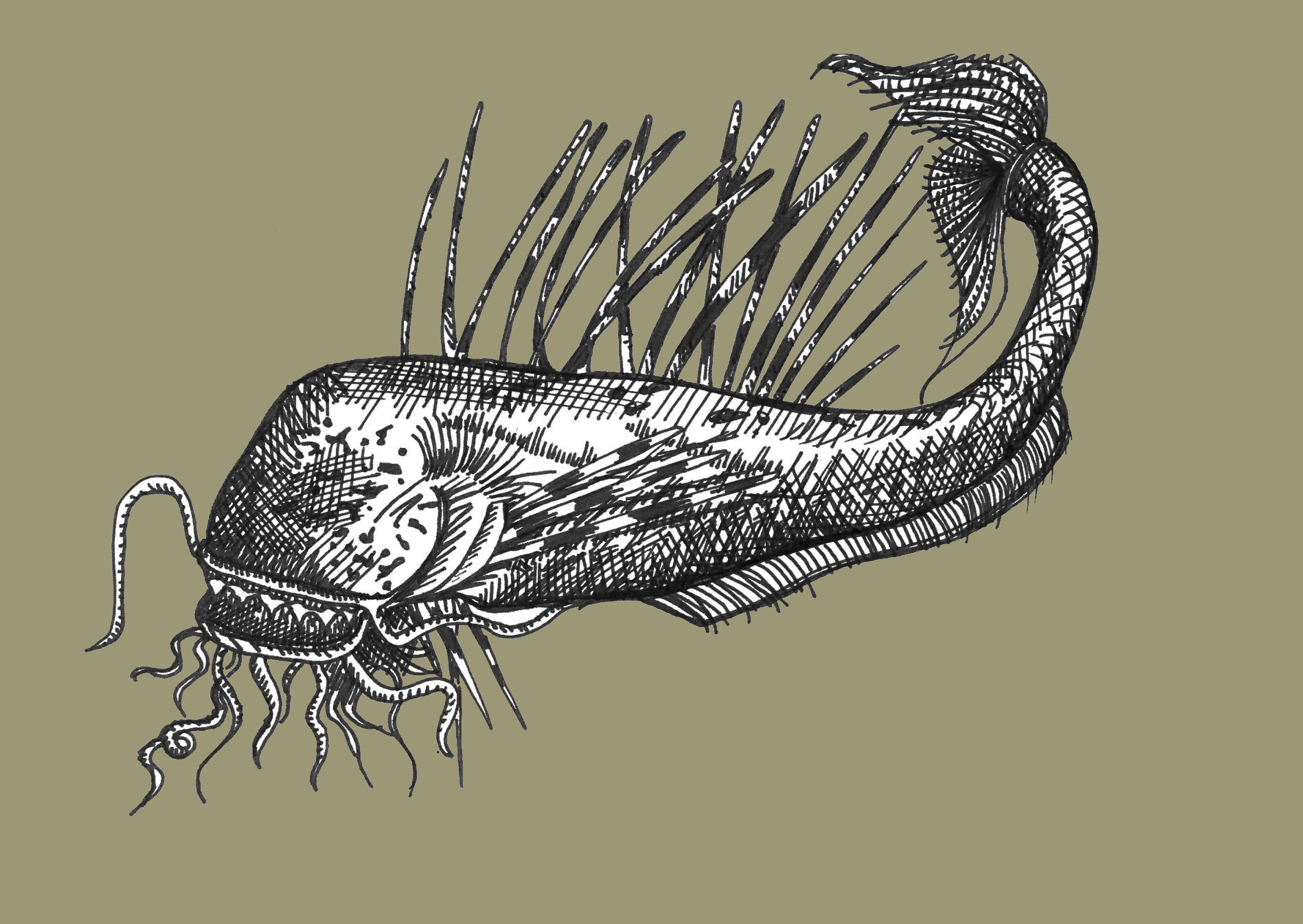
Climate change is scary. Climate change monsters, it turns out, are too. For decades, people have been inspired by dramatic environmental changes when coming up with creatures and horrorscapes. One of the most famous is Frankenstein’s monster, who emerged from the mind of Mary Shelley during what was known as The Year Without a Summer.
Recently, we asked you to help us design a climate change monster—what beasts will emerge from a world ravaged by rising temperatures and sea levels? Almost 100 Atlas Obscura readers reached out with creatures scaly and slimy, humanoid and extraterrestrial. Some come from the top of the planet, while others thrive at the bottom of the ocean. All of them were inventive, and helped give a face or a name to a phenomenon many people are still struggling to wrap their heads around.
We couldn’t feature them all, but here are some of our favorites, organized thematically and shortened, where necessary, for clarity.
An ecosystem out of control
I can’t shake the image of polar bears moving into southern territories and adapting in terrible ways. Shedding every bit of their white fur due to rising temperatures, the pitch-black skin beneath is exposed, causing them to appear unnatural, as if they’re living shadows. Though losing their fur has allowed them to survive in the scorching heat, other animals are less fortunate, and the bears grow lean and bony, ever more wraith-like. Slowly but surely, the burrowing rodents of the baked forests and runty fish of the polluted rivers can no longer sustain them. The shadow bears move into small towns and settlements, setting their ebony gaze on the one thing to survive this calamity intact—us.—Dave Froom
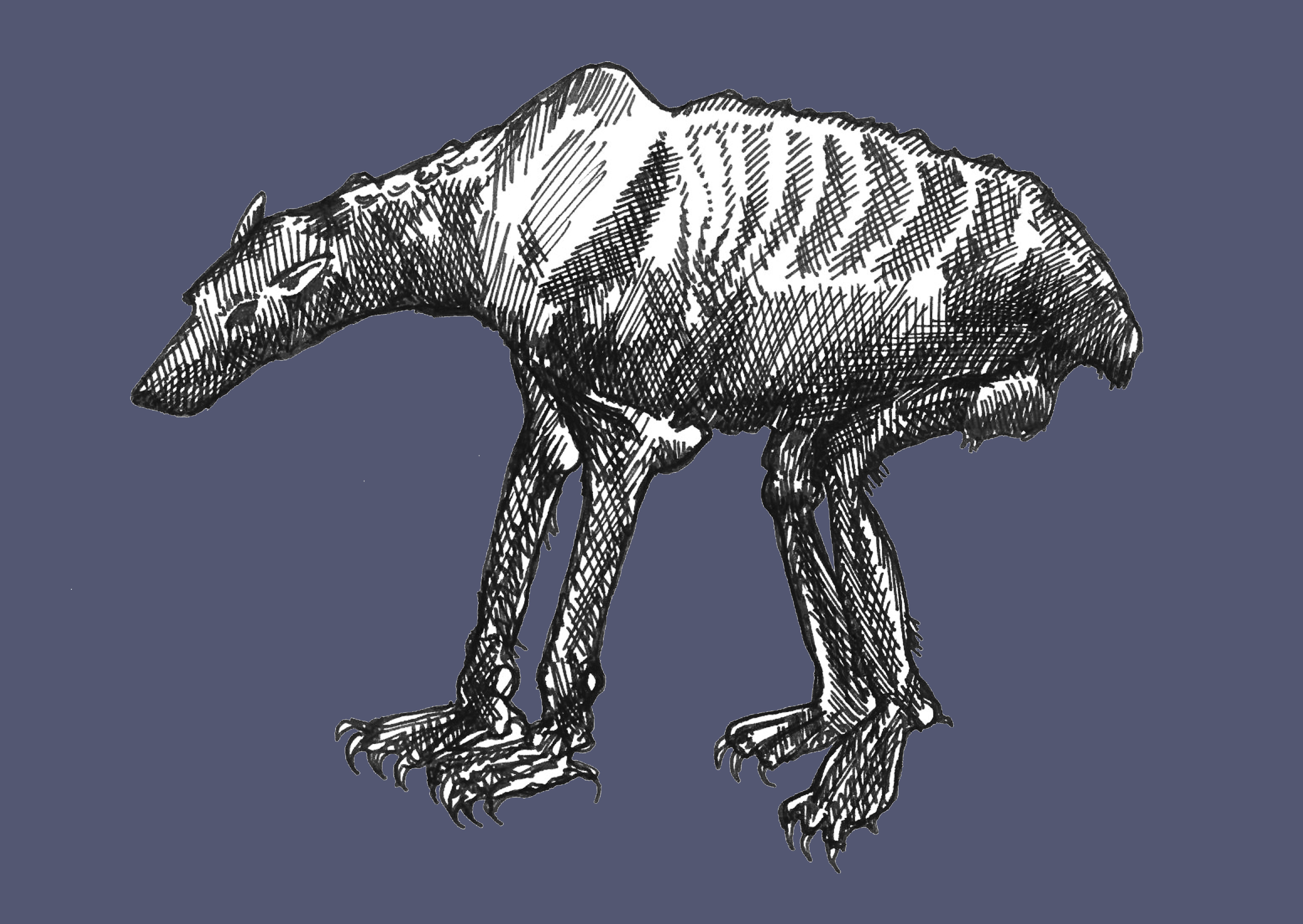
It started out as a small group of plastics, washed out into the ocean from the countries of the world. And then it started to grow. Bacteria from all over the globe converged into one spot on an island of plastic floating in the ocean. As sea temperatures continued to rise, the bacteria flourished, growing and adapting to their environment. Sea creatures became tangled in the mass, allowing for the change to begin. Slowly at first, but as the bacteria latched on to the newly acquired organic material, the island of plastic began actively gathering organic material. Schools of fish were trapped in plastic webbing, birds that landed on the creature were pulled under the water and drowned.
It began to finally take a shape. A Frankenstein Leviathan of plastic and sinews. Long tentacles stretched out behind it, webbing between the limbs ready to pounce on prey. Inside the cavernous exoskeleton was a network of enzyme pools and bile ducts that worked in rapid fashion to reduce organic material to its usable parts in a matter of minutes.—Falcon Storm
Primordial ooze
It takes over cities flooded by massive hurricanes. Any animal it touches become feverish and sluggish as their body is converted into the bacteria that make up the sludge … As long as it stays connected to the central mass, these flood zombies and the cloud of sludge they generate retreat to the ocean, as waters drain and drift through the currents, until another hurricane brings them inland. If it disconnects and dries out, rescuers will only find a partially digested corpse lying in a slick, oily puddle.—Marshall Bradshaw
A tiny bacteria or virus that has been frozen in the permafrost since it wiped out all of its prehistoric primate victims. Of course we will have no resistance to it, and it will doubtless happily mutate in a huge planet full of new hosts. We are already seeing some pretty scary stuff thawing out right now. Not as exciting as a giant deep-sea radioactive kraken, but a LOT scarier to those of us paying attention.—Stephanie Harper
Plants to be reckoned with
The red weed proliferated in the declining days of women and men. The only things it required in decadent abundance were heat and carbon dioxide to fuel its accelerated rate of photosynthesis, and these humanity had been happy to provide. The red weed began in the forests withered down to bare sticks, in the parched waste places, in the empty lots and suppurations in the roads. The roots of the red weed, like rust given life, even bit into steel. The red weed grew even in lightless places; some said it ate darkness the way normal plants ate light.
The red weed was like us. It was adaptable. It thrived everywhere. And the red weed was like us, too, in that it was selfish. It gave nothing back—not food, not fuel, not so much as a fragrant flower. The red weed grew over the walls of what had been cities, until they were cities no more, until they were but vague shapes beneath a thick smear of red. The red weed became an eczematous second skin over all the planet.—David Kammerzelt
I imagine that melting ice formations on the poles, caused by climate change, reveal dormant spores of a prehistoric plant species, similar to Equisetum. Once the spores are transported to the world (by a craft of some kind or by some living creatures), the plant spreads rapidly and grows with unparalleled speed. Agricultural area is affected tremendously, which leads to the critical shortage of food in the world. But even cities literally crumble apart, as the invasive plant can take root in every crack or gap or even on a porous surface of asphalt pavement. All attempts to eradicate or suppress the invasive Equisetopsida are futile—the only way to confront it is by physical elimination, day by day.—Alex Pesh
Creatures from the deep
As the earth gets warmer, the polar ice will melt and the oceans will rise. What is left of dry land will become more humid and swampy. Day to day, the weather will always be drizzly and damp, when it’s not pouring rain. Human habitation will have to be moved to buildings on tall stilts and artificial islands. In this wet environment, the cephalopods (octopuses, squid, nautiluses, and cuttlefish) will thrive. They can already crawl on land briefly as long as it’s moist. In the future they will have almost unlimited access to whole new classes of prey. With a few minor mutations, the giant squid will become an amphibious apex predator, abandoning the ocean depths to hunt on land. Intelligent and wily, these huge creatures will slide into stilt-raised buildings in the middle of the night and quickly consume all the residents, before disappearing into their watery lair. As these creatures evolve, they will become longer-lived and more intelligent, until humanity has to struggle to survive.—Vincent Treewell
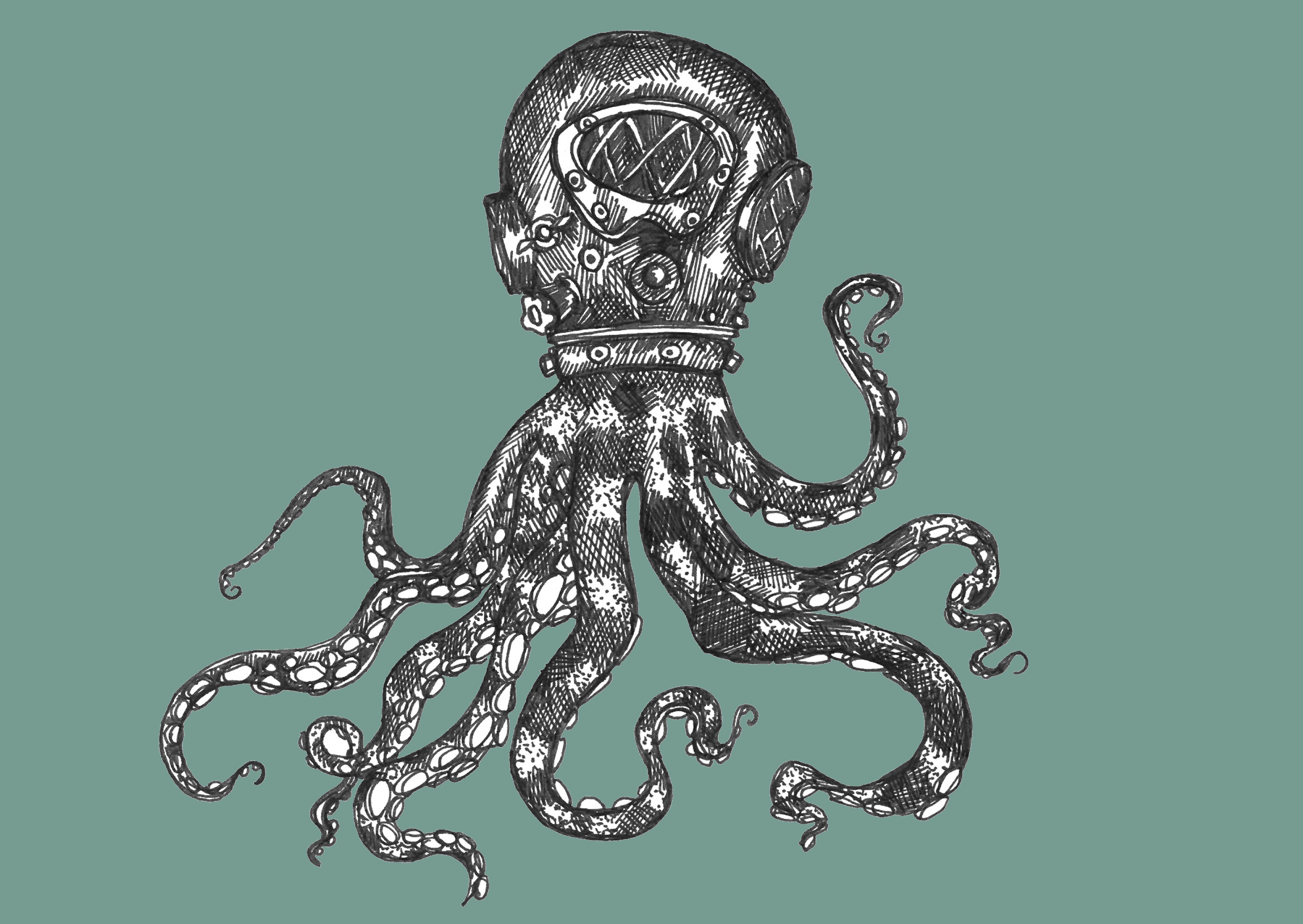
The water level rose and took over some cities. Octopuses got smarter and took over the sunken cities and learned to how to use our technology. The people had to defend the remaining cities from the octopus. Then the octopuses made suits so that they can go on land … the octopuses are trying to invade. So, who is going to win—the humans or the octopuses?—Ben P., age 11
When I saw your call for climate change monsters, the first thing I thought of was a report that climate change is resulting in all-female sea turtle nests. Sex in turtles is determined by temperature; warmer temperatures produce more females and cooler temperatures produce more males, and with temperatures on the rise globally, we’re now seeing turtle clutches that are 99 percent female. What if all-female turtle populations instead somehow evolve to reproduce parthenogenetically?
As turtles are famously long-lived and don’t undergo senescence, I imagined rapidly breeding turtles populations could reproduce again and again as they invade more and more territory in vast, all-female swarms. Admittedly turtles don’t seem all that scary as they’re slow, but so are zombies. Also, considering the popular image in mythology of turtles holding up the world on their backs, I thought there was something kind of poetic and karmic about an apocalypse brought on by a turtle swarm abetted by human-driven climate change.—Aimee Lim
The repercussions of nuclear war are felt strongest in the environment. Specifically, in the creatures. Somehow, they didn’t all die. Some of them changed. As sea and sky became one again, creatures that struggled to find food in the damaged environment adapted to a poisoned world. The radiation evolved the animals into creatures who could go farther, go deeper, to find food. The fish that was in the water, still, was very deep in the water. And so the birds changed. Perhaps they grew gills and teeth and fins. The new hybrid of pelican and angler fish is able to lure food in different ways and swim deeper than the natural bird. This, the unnatural bird, is the new predator, in the deep sea.—Talia Blumofe
In my mind, the climate change monster looks like a giant, shark-sized catfish, with the visible, crooked teeth of a sand tiger shark, but without a shark’s smooth, streamlined and somewhat comforting features. In place of a shark’s fin it has long, striped spines, not unlike a lion fish’s spines, the sort of thing that brushes against your leg in murky water and you think there might be something there…
It doesn’t have any eyes, because eyes give an animal a certain level of personality, or a sense of empathy, and the climate change monster has no empathy. The lack of eyes also makes it seem less dangerous. Even if it has all these fearsome spikes and things, if it doesn’t have eyes, it’s not going to go after you, right? … This is how it operates—the climate change monster lets you drift ever closer, and by the time you’ve realized it is not only as dangerous as it appears, but is also very, very real, it’s too late.—Jesse Bethea
Devorantis Antipathes (devour against suffering) is a species of deep ocean coral. It does not require light from the sun to penetrate the deep gloom, for it has developed a taste for flesh. It thrives on the flanks of active submarine volcanoes and hydrothermal vents. These vents have always been sanctuaries for life in the deep ocean but with more life fleeing the toxic surface waters they have become organic hives.
With an unprecedented abundance of food, Devorantis Antipathes has grown enormous … with tentacles that can grow to be three to four meters in length, which the coral uses to ensnare prey and feed it to a gaping maw at the centre of the coral’s crown. Unlike its sunlit water cousins, Devorantis does not make glorious and magnificent reefs. It creates eerie forests of skeletal tentacles, dense thickets of metallic thorns and haunting fleshy growths. It may be a horror of the deep but like the Siren’s song, there is an inescapable grace and serenity to this creature.—Alex Clark
Tiny things made terrible
All across the world every environment imaginable is being overrun and utterly dominated by gigantic, mutated variations of the creatures previously known as tardigrades, or more colloquially, “water bears.” Also named “moss piglets” due to their rather docile appearance, clumsy movements, and habit of peacefully grazing on moss beds, these tiny creatures are usually no larger than 0.5 millimeters. That cannot be said for “Tardi-upgrades,” that are nothing short of creatures seemingly inspired right out of a Horror/Sci-fi video game nightmare. They are ten to 12 feet long, 600-800 pound, eight-legged monstrosities that crawl out of saltwater breakers and freshwater lakes everywhere. Gone now are the gentle “moss piglets”, only to be replaced by swift, savage, and merciless hunters that have a distinct fondness for human flesh.—Brannon Hollingsworth
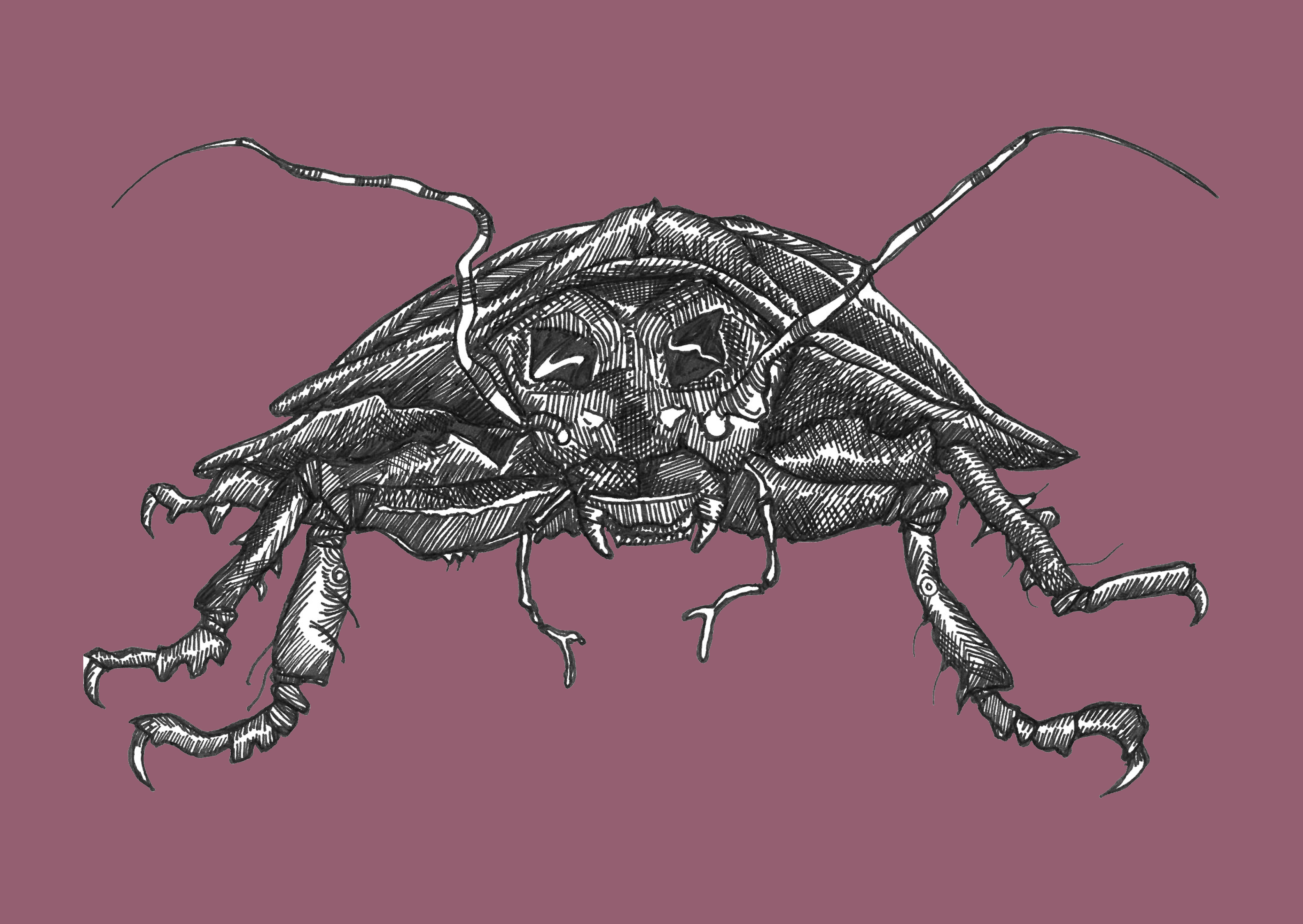
I see giant African land snails which currently wreak havoc on new habitats they have been transplanted to, growing larger and having seven foot shells. Adapting to semi aquatic they will prefer and thrive in jungles near rivers and supplement a vegetable diet with fish and animals that get within their area. Having a 15-foot reach from their shell they can stealthily hide amid foliage and silently drop down to bite someone’s head off.—Andhi Scott
Many scavenger type insects that live on dead and decaying matter will have a big survival advantage. In the face of ever hotter summers, and eventually summer year round, the common brown cockroach will develop huge ruggedized exoskeletons to protect themselves from the heat of the sun. Their inner bodies will require little water, and they will evolve a special organ that can filter its own liquid waste for reuse.
Females will reach 12 feet long, males only six feet long, with heavy shields around their faces, long nose spikes, and long spiked tails that make them look like ancient rhinoceros. They will keep their short thin front legs for manual tasks and will eventually develop an opposed thumb on their front feet. Due to their weight, they will lose their ability to fly, but they will not need to fly with such an abundance of food dead and dying all around them. … When all of the other plant and animal life has died away, they will be the last creatures left alive. They will live a long time dining on each other. Then, somewhere in the far eons of time, they’ll finally die out, and the world will be empty of life and quiet again.—Camilla Herold

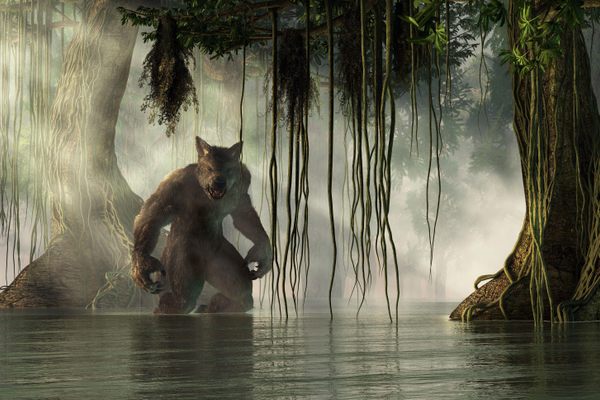








Follow us on Twitter to get the latest on the world's hidden wonders.
Like us on Facebook to get the latest on the world's hidden wonders.
Follow us on Twitter Like us on Facebook